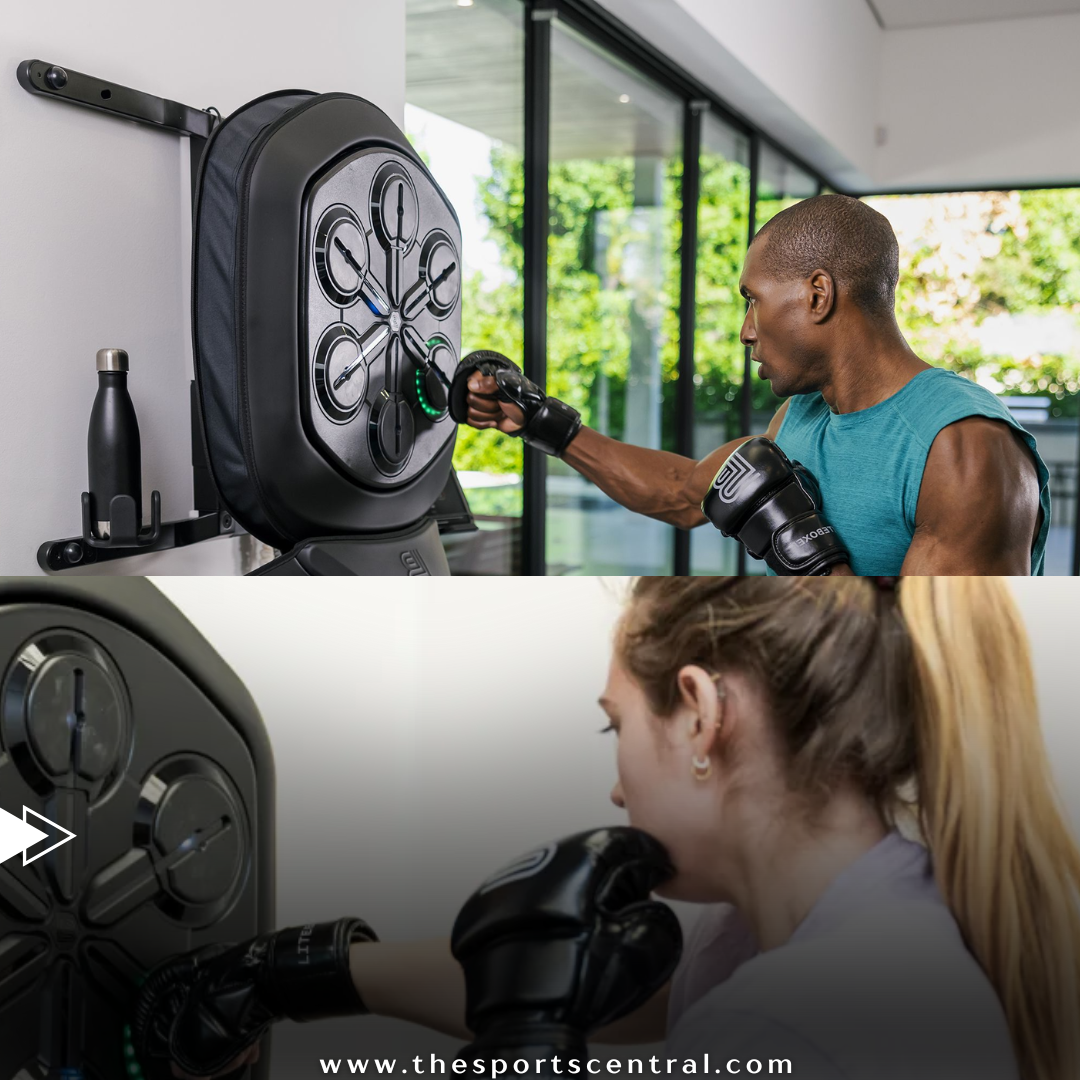Boxing has long been recognized as one of the most effective forms of exercise for building strength, endurance, and agility. But beyond the ring, it has also gained popularity as a powerful tool for weight loss. In recent years, boxing machine workouts have emerged as a convenient and effective way to harness the fat-burning benefits of boxing without requiring extensive equipment or a dedicated sparring partner. This guide will explore the benefits of boxing machine workouts for weight loss, how to incorporate them into your fitness routine, and the top exercises you can do to achieve your weight loss goals.
Why Boxing Machine Workouts Are Effective for Weight Loss
Boxing machine workouts are gaining traction in gyms and home fitness setups due to their unique ability to provide a full-body workout that combines cardio, strength training, and agility. Here’s why they are so effective for weight loss:
1. High-Calorie Burn
Boxing is a high-intensity workout that engages multiple muscle groups simultaneously, including the arms, shoulders, chest, core, and legs. When you add a boxing machine to the equation, the intensity is further amplified. The constant punching, jabbing, and footwork required in boxing can burn between 500 to 800 calories per hour, depending on your weight, intensity level, and fitness condition.
2. Combines Cardio and Strength Training
Boxing machine workouts seamlessly blend cardiovascular exercises with strength training, providing both aerobic and anaerobic benefits. This combination is ideal for weight loss, as it helps burn fat while building lean muscle mass, which in turn boosts metabolism and enhances the body’s ability to burn calories even at rest.
3. Improves Cardiovascular Health
Regular boxing workouts on a machine can significantly improve cardiovascular health by elevating your heart rate and improving circulation. Over time, this leads to a stronger heart, lower blood pressure, and reduced risk of heart disease. A healthy cardiovascular system is essential for effective weight loss, as it enhances the body’s ability to metabolize fat for energy.
4. Increases Metabolic Rate
High-intensity workouts like boxing cause the body to continue burning calories long after the workout has ended. This phenomenon, known as the afterburn effect or Excess Post-Exercise Oxygen Consumption (EPOC), means that boxing machine workouts can help increase your metabolic rate, aiding in weight loss even during periods of rest.
5. Enhances Mental Well-Being
Boxing is not only a physical exercise but also a mental one. The focus, coordination, and mental agility required to perform boxing movements can help reduce stress and anxiety. Reducing stress is a crucial factor in weight loss, as stress can lead to emotional eating and other unhealthy behaviors.
Types of Boxing Machines for Weight Loss
Before diving into specific workouts, it’s essential to understand the different types of boxing machines available and how they can be used for effective weight loss:
- Punching Bag Machines: These are the most common type of boxing machines and come in various forms, including heavy bags, speed bags, and free-standing bags. Punching bag machines provide resistance, allowing you to practice your punches, jabs, hooks, and uppercuts. They are ideal for building upper body strength and improving cardiovascular endurance.
- Boxing Simulators: Boxing simulators are high-tech machines that mimic a real-life boxing experience. They often include sensors, lights, and screens that provide a virtual opponent and various punching targets. These machines offer an engaging, interactive experience, making them perfect for high-intensity interval training (HIIT) workouts.
- Reflex Bags: Reflex bags are designed to improve hand-eye coordination, speed, and reflexes. They are typically mounted on a spring-loaded pole that bounces back when hit. Reflex bags are excellent for agility training and can help burn calories quickly through fast-paced punching sequences.
- Double-End Bags: These are small, round bags attached to the floor and ceiling with elastic cords. Double-end bags require precise and rapid punches, making them ideal for improving speed, accuracy, and rhythm while also burning calories.
Designing a Boxing Machine Workout for Weight Loss
To effectively use a boxing machine for weight loss, you need to design a workout that combines intensity with variety. Here’s a step-by-step guide to creating an efficient boxing machine workout plan:
Step 1: Warm-Up (5-10 Minutes)
Start with a dynamic warm-up to prepare your muscles and joints for the workout ahead. A proper warm-up increases heart rate, improves blood flow to muscles, and reduces the risk of injury. Include exercises like:
- Jumping jacks
- Arm circles
- Leg swings
- High knees
- Shadow boxing (practice punches without a machine)
Step 2: High-Intensity Interval Training (HIIT) with Boxing Machine (20-30 Minutes)
The core of your boxing machine workout should consist of high-intensity interval training. HIIT alternates between periods of intense activity and short periods of rest or low-intensity activity. This approach is highly effective for weight loss because it maximizes calorie burn and engages multiple muscle groups.
Sample HIIT Boxing Machine Routine:
- Round 1: Power Punches (3 Minutes)
- Use a punching bag machine.
- Perform power punches (jabs, crosses, hooks) as hard as you can for 30 seconds.
- Rest for 15 seconds.
- Repeat for 3 minutes.
- Round 2: Speed Drills (3 Minutes)
- Use a speed bag or reflex bag.
- Perform rapid punches for 30 seconds.
- Rest for 15 seconds.
- Repeat for 3 minutes.
- Round 3: Combination Drills (3 Minutes)
- Use a boxing simulator or punching bag machine.
- Execute a combination of punches (jab-cross-hook-uppercut) for 30 seconds.
- Rest for 15 seconds.
- Repeat for 3 minutes.
- Round 4: Footwork and Movement (3 Minutes)
- Move around the bag, practicing different footwork patterns (side steps, pivots, and back steps).
- Punch the bag intermittently to simulate real fight scenarios.
- Continue for 3 minutes without rest to improve endurance.
Step 3: Strength Training Circuit (10-15 Minutes)
After your HIIT session, move into a strength training circuit that targets all major muscle groups. Boxing requires strength in the core, legs, and upper body, so focus on compound movements that build muscle and burn fat.
Sample Strength Training Circuit:
- Push-Ups (1 Minute)
- Perform as many push-ups as possible in 1 minute.
- Targets chest, shoulders, and triceps.
- Squats (1 Minute)
- Perform bodyweight squats or add dumbbells for extra resistance.
- Focus on form and depth to engage the glutes, hamstrings, and quadriceps.
- Plank Hold (1 Minute)
- Hold a plank position for 1 minute to strengthen the core.
- Ensure your back is straight and your core is engaged.
- Lunges (1 Minute)
- Alternate lunges for 1 minute, stepping forward and lowering your back knee towards the ground.
- Engages the glutes, quads, and core.
Repeat this circuit twice with minimal rest between exercises.
Step 4: Core Conditioning (5-10 Minutes)
Boxing relies heavily on a strong core for power and balance. Finish your workout with core exercises to build strength and stability.
Sample Core Conditioning Routine:
- Russian Twists (1 Minute)
- Sit on the floor with your knees bent and feet lifted slightly off the ground.
- Twist your torso from side to side, touching the ground beside you with each twist.
- Bicycle Crunches (1 Minute)
- Lie on your back, lift your shoulders off the ground, and bring your opposite elbow to your opposite knee in a cycling motion.
- Leg Raises (1 Minute)
- Lie on your back with your legs straight. Lift your legs towards the ceiling, then slowly lower them back down without touching the floor.
Step 5: Cool Down and Stretch (5-10 Minutes)
Finish with a cool-down session to gradually lower your heart rate and stretch your muscles to prevent injury and improve flexibility.
- Perform static stretches for all major muscle groups.
- Focus on deep breathing to relax your muscles and mind.
Benefits of Boxing Machine Workouts for Weight Loss
1. Full-Body Engagement
Boxing machine workouts engage multiple muscle groups, ensuring that your body works as a cohesive unit. This full-body engagement leads to a higher calorie burn compared to other forms of exercise that focus on isolated muscle groups.
2. Improves Agility and Coordination
Boxing machines, especially reflex bags and double-end bags, require quick reflexes, sharp movements, and precise coordination. This improves agility, balance, and coordination, which are crucial for effective weight loss and overall fitness.
3. Reduces Boredom
The interactive nature of boxing machine workouts, particularly when using simulators or virtual reality setups, keeps the workout dynamic and engaging. This reduces the chances of getting bored and increases the likelihood of sticking with the workout routine, which is crucial for sustained weight loss.
4. Accessible for All Fitness Levels
Whether you are a beginner or an advanced athlete, boxing machine workouts can be modified to suit your fitness level. Beginners can start with basic punching drills and gradually increase intensity, while advanced users can incorporate complex combinations and high-speed drills to challenge themselves.
5. Effective Stress Relief
Boxing is a great way to relieve stress and channel energy in a positive direction. The physical exertion combined with the mental focus required to hit the target effectively can help reduce anxiety and promote a sense of well-being, which is essential for maintaining a healthy weight.
Tips for Maximizing Weight Loss with Boxing Machine Workouts
To achieve the best results from your boxing machine workouts, consider the following tips:
- Consistency is Key: Aim to incorporate boxing machine workouts into your routine at least 3-4 times per week. Consistent practice will help you burn more calories and improve your skills over time.
- Mix Up Your Workouts: Avoid doing the same workout every day. Incorporate a variety of punches, combinations, and drills to keep the workouts challenging and prevent plateaus.
- Focus on Form: Proper form is essential to prevent injury and maximize effectiveness. Ensure that you are using the correct technique for each punch and movement.
- Stay Hydrated: Boxing workouts can be intense, leading to significant sweating. Stay hydrated by drinking plenty of water before, during, and after your workout.
- Combine with a Healthy Diet: For optimal weight loss, pair your workouts with a balanced, nutrient-rich diet. Focus on whole foods like lean proteins, fruits, vegetables, whole grains, and healthy fats.
- Incorporate Rest Days: Allow your body time to recover by incorporating rest days into your workout schedule. Rest is essential for muscle recovery and preventing burnout.
Conclusion: Knock Out Fat with Boxing Machine Workouts
Boxing machine workouts offer a fun, engaging, and effective way to achieve your weight loss goals. By combining high-intensity cardio, strength training, and agility exercises, these workouts provide a full-body experience that can help you burn fat, build muscle, and improve cardiovascular health. Whether you’re a beginner or a seasoned athlete, boxing machine workouts can be tailored to meet your fitness level and help you knock out those extra pounds. Incorporate these workouts into your fitness routine, stay consistent, and pair them with a healthy diet to see the best results.










